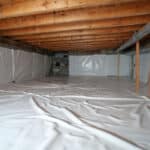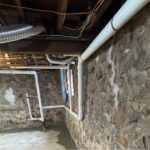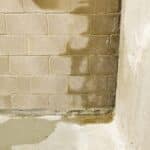There are several causes for a wet basement. Our first step is to determine the underlying cause of flooding and then we will create a solution to fix it.
Leading Cause of a Flooded Basement
The leading causes of a flooded basement include:
- Saturated grounds: Sometimes the rain and snow accumulate faster than the ground can absorb. When this occurs, the water table begins to rise which causes hydrostatic pressure to build up. This hydrostatic pressure pushes up from underneath the foundation and causes the water to enter into the basement where the wall and the floor meet.
- Basement windows and stairwell doors: If there is no drain for a window well or stairwell door then water will collect around these entry points and eventually enter through window sill, window glass and underneath stairwell doors.
- Cracks in your basement walls: Cracks in the wall can allow water to seep into your basement whenever there is rain or snow. Even if gutter system, window wells and everything is installed properly, moisture and water may still enter the hole.
- Gutters and Downspouts:
- Misdirected water: Downspouts should dispense water a minimum of 4ft away from the home. If the downspouts are not properly directed away from the home, then the rain will saturate the ground around the home which will cause flooding.
- Clogged gutters: Leaves and other debris build up in the gutters and downspouts over time and they must be cleaned. The gutter system will become clogged if debris is not cleaned out. If the system is clogged, rain will no longer be able to pass through the system and this may lead to water entering through the cracks of walls, windows, etc.
- Plumbing leak, clogged drainage pipe, or sewage backup:
- Worn out plumbing, frozen pipes, punctured pipe can all lead to broken water lines. This are things that can lead to a flood.
- Heavy rain and snow may overwhelm the sewer system which may cause a backup in the water flow. These may even cause the sewage back up. A clogged sewer line can have similar problems.
- Sump pump failure: A sump pump is the heart of the drainage system. If the sump pump fails then water will build up and flood your basement. You should follow the recommended sump pump maintenance and always make sure the sump pump has power.
What To Do If You Have A Flooded Basement:
If you find water in your basement, you should contact a waterproofing company to do the following: evaluate the water issue; determine the best solution to eliminate the issue and protect your basement from future flooding; and install the solution. Provided below is a list of what you should do if your basement is flooded.
- Consult with a specialist.
- Call a waterproofing company to assess the water issue and to figure out a solution plan.
- Call disaster restoration specialist if you need help removing the water.
- Before entering a flooded basement, shut off all power to your basement (electric and gas).
- Determine the source of the water. Wear boots and gloves for protection.
- If there is a burst pipe, shut off the water supply.
- If there is a sewage failure, do not use any toilets, sinks, washers, etc.
- Start removing water from basement (via sump pump, pool pump, wet vac, bucket, etc.)
- If the basement has a floor drain, make sure the drain is free from debris and not clogged.
- Moved damaged items out of the basement to dry in a ventilated area.
NOTE: Do not touch any items that require electricity even when electricity is turned off. Let these items dry in place and have an electrician inspect for damage. - Remove carpeting ASAP so the floor below the carpet can dry. If carpeting can be saved, call local carpet cleaning company. If carpet is not dried thoroughly, it will harbor mold.
- Make sure the basement is well ventilated while it is drying. Open windows and doors, set up fans and dehumidifier.
- Inspect floors and walls. Remove any damage drywall and insulation to prevent mold.
- If mold is detected, call a waterproofing company or mold remediation company immediately for mold remediation.
- Schedule waterproofing services to avoid future flooding.
Wet Basement Solutions

Regrade the Landscape, Gutters and Downspouts
A great number of basement water problems can be solved by handling rainwater and surface drainage properly using gutters and downspouts with extenders or splashblocks to carry the water away from the foundation. Sloping the grade away from the house, which may require hauling fill to the site, is very important. This should be done before any below-grade drainage system is installed, since the above-grade corrections may solve the problem. Even if a drainage system is required, removing water at the source as much as possible is necessary.
Look for obvious places where water can enter. Plugging those leaks may be all you need to keep you basement dry.
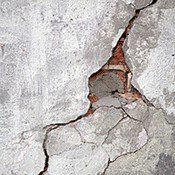
Fill Cracks and Gaps
Whether because of settling, poor construction, or just age foundations can develop seams, cracks, and gaps that are an open invitation for water. Look for cracks in corners, under windows and doors, and where the basement floor meets the walls. Gaps often open up around windows, where an exterior stairwell meets the foundation, and anywhere pipes penetrate.
SOLUTION
Path cracks in concrete with hydraulic cement. “It expands so like it’s almost like welding the concrete back together. And it sets fast, so you can plug holes even if water is actively coming through.” For masonry foundations, he digs the old mortar out of the joints and fills them with new.
Cover Exposed Openings
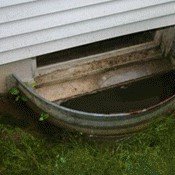
Many basements depend on window wells to bring in natural light, and on an exterior stairwell that provides access to and from the outside. Both these features make great rain catchers if not properly covered. If you see dark water stains under the windows and on the steps and sides there is a good chance they are leaking.
SOLUTION
Add clear plastic window-well covers, which let in light while keeping out water and debris. Standard sizes are available in home centers for $10 to $40 dollars. Custom covers can cost as much as $125. You may also refit a weather-tight metal or fiberglass door over the stairwell. They’re sold in lumberyards for between $200 and $300.
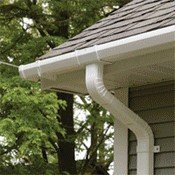
Improve Gutter System
An average size roof sheds 1,000 gallons of water for every inch of rain that falls. If the gutters leak and overflow, or downspouts don’t extend far enough from the house, all that rainwater could end up in your basement.
SOLUTION
Attach down spouts extensions and add splash blocks to carry the water at least 3 feet from the foundation. If you don’t like the looks of the extensions, or they’re in inconvenient spots, bury a drainpipe to carry water to daylight or to a drywell- a perforated barrel buried at least 8 ft from the foundation. A filter at the top of the downspout keeps the drain clear; filter fabric wrapped around the drywell keeps gutters in good shape with twice yearly cleanings and necessary repairs.

